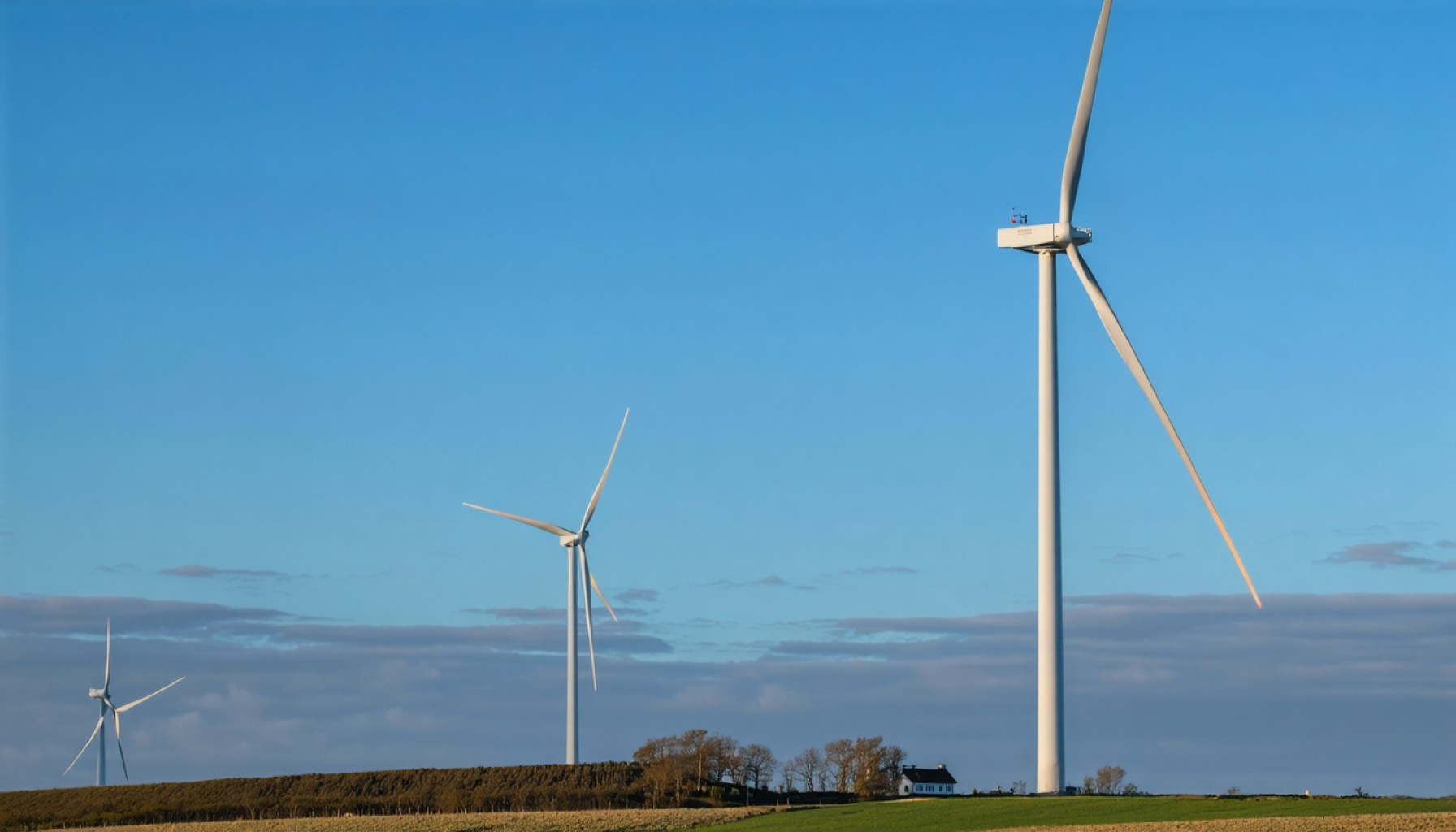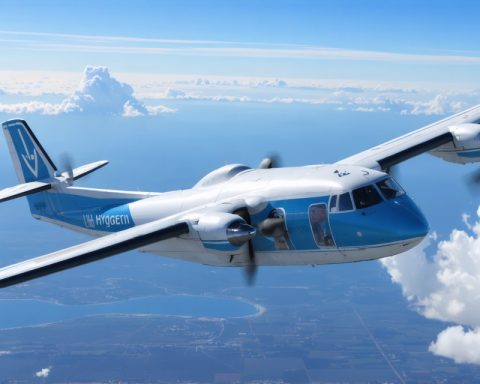- Denmark harnesses coastal winds to lead in global clean energy, transforming them into a renewable powerhouse.
- The country invested heavily in offshore wind farms like Horns Rev and Anholt, meeting nearly half of its electricity needs through wind power.
- Danish companies, Vestas and Ørsted, are pioneers in wind turbine technology, exporting innovations worldwide.
- Government policies and incentives support large-scale and community-based wind projects, ensuring a sustainable energy future.
- Community involvement in wind cooperatives fosters ownership and environmental responsibility.
- Denmark serves as a model for nations seeking a sustainable shift from fossil fuels.
The coastal winds that brush against Denmark’s shores are no ordinary breezes. Instead, they are the very lifeblood of a sustainable energy revolution that has propelled this small Scandinavian country to the forefront of the global clean energy movement. With a landscape dotted by wind turbines, Denmark has transformed nature’s intangible gusts into something palpable: a renewable powerhouse.
Harnessing the Power of the Wind
Denmark’s commitment to wind energy is as steadfast as the turbines standing tall in its fields and off its coasts. Back in the late 20th century, the country recognized the potential of its windy environment and invested heavily in offshore wind farms. Fast forward to today, Denmark lays claim to some of the most advanced offshore wind farms on the planet, including the massive Horns Rev and Anholt parks.
These engineering marvels not only capture kinetic wind energy but also channel it efficiently into the national grid, meeting a significant portion of the country’s electricity consumption. As of recent years, wind power alone accounted for nearly half of Denmark’s energy supply—a shining beacon of the nation’s dedication to clean energy.
A Legacy of Innovation and Sustainability
Denmark’s intimate relationship with wind energy isn’t solely about meeting current energy demands. It’s about setting a pioneering example in innovation and sustainability. Danish companies, such as Vestas and Ørsted, have become global leaders in wind turbine technology, exporting expertise and equipment worldwide. These companies embody Denmark’s vision of a cleaner, greener future, showcasing how innovation can scale to meet international demands.
Moreover, the nation’s comprehensive approach to integrating renewable energy showcases its capacity to plan for a sustainable future. Policies and incentives crafted by the government have created a thriving environment for both large-scale and community-based wind projects. This synergy between policy and technology underscores Denmark’s commitment to decarbonizing its energy system.
Community Involvement: A Wind Beneath Their Wings
Integral to Denmark’s wind power narrative is the engagement and empowerment of local communities. Here, residents are not mere bystanders; they are active participants. Across the country, many communities have invested in local wind cooperatives, gaining direct benefits from the clean energy produced.
This community-driven approach has cultivated a sense of ownership and stewardship over the country’s energy future. It highlights the power of grassroots involvement in tackling global challenges, fostering a culture that values environmental responsibility alongside economic development.
The Takeaway: A Model for the World
Denmark’s success in harnessing wind power offers more than just an environmental advantage; it’s a blueprint for other nations looking to pivot away from fossil fuels. The country’s journey serves as a testament to what can be achieved with focused commitment, innovation, and cohesive policymaking.
In a world grappling with the impacts of climate change, Denmark stands as a shining example of how natural resources, when effectively harnessed, can power an entire country sustainably.
The winds of change are blowing, and Denmark is not just feeling them—they’re owning them, proving that a clean energy future is not just possible, but also exceptionally achievable.
How Denmark Became a Global Leader in Wind Energy: Lessons for the World
Denmark’s Wind Energy Revolution: How It Started and Where It’s Going
Denmark’s achievements in the realm of wind energy can be attributed to a series of strategic decisions and a shared national vision. This Scandinavian country has made the most of its geographical advantages and invested heavily in harnessing the power of wind, leading to a transformation that other nations are keen to emulate. Below, we delve into numerous aspects of Denmark’s wind energy sector that can serve as a guide for others.
How Denmark Pioneered Wind Energy
– Early Adoption and Investment: Denmark’s journey into wind energy began in the 1970s in response to the oil crisis, which spurred the nation to seek independent energy sources. The focus on wind harnessing emerged from both the necessity and the natural coastal topography ideal for wind farms.
– Innovative Milestones: The establishment of offshore wind farms, such as Horns Rev and Anholt, was a testament to Denmark’s innovative spirit and engineering prowess. These developments not only advanced technology but also set benchmarks for other countries aiming for energy independence and sustainability.
– Strategic Partnerships and Exports: Danish companies like Vestas and Ørsted aren’t just industry leaders domestically; they spearhead the global wind energy movement, exporting both technology and knowledge. This globalization of expertise has contributed significantly to the widespread adoption of wind energy technology.
Real-World Use Cases and Industry Trends
– Decentralized Energy Models: Denmark’s energy policy involves decentralized energy production, where community cooperatives own and operate their wind turbines. This model of energy democracy ensures that profit and responsibility are shared locally, thereby elevating community involvement and economic resilience.
– Focus on Innovation: Wind energy technology continues to evolve with advancements in turbine design, increased efficiency, and enhancements in grid integration. These innovations constantly push the envelope and set new standards for global energy systems.
Challenges and Limitations
– Intermittency of Wind: Like all renewable resources, wind is intermittent and requires a robust energy storage solution and balancing systems. Denmark’s integration of battery storage and grid management systems showcase how these challenges can be addressed effectively.
– Environmental Concerns: While wind farms produce clean energy, they also face environmental impact issues such as avian mortality and noise. Denmark is investing in research to mitigate these effects, ensuring their sustainable practices stay ahead of these challenges.
Market Forecasts and Sustainability Insights
– Growing Global Market: The global wind energy market is slated for expansive growth. According to the Global Wind Energy Council, developing countries are increasingly adopting wind power, which aligns with Denmark’s vision to lead in exports and consultation.
– Commitment to Carbon Neutrality: Denmark’s ambitious goal is to achieve carbon neutrality by 2050, emphasizing its leadership in addressing climate change.
Actionable Recommendations for Emulating Denmark’s Success
1. Policy and Infrastructure Development: Countries new to wind energy should invest in strong government policies and robust infrastructure to support the development and maintenance of wind farms.
2. Community Engagement: Develop programs that encourage community investment and participation in renewable energy initiatives to foster ownership and local support.
3. Invest in R&D: Continuous research in renewable technologies will ensure progress and adaptation to growing energy demands.
4. International Collaboration: Engage with global leaders like Denmark to share best practices, technology, and expertise.
Conclusion: Bringing Wind Energy to the Forefront
Denmark’s approach to wind energy conservation offers a model for countries worldwide, inviting partnerships and innovation to address the climate crisis effectively. By learning from Denmark’s example, nations can make strides towards their sustainable energy goals and secure a cleaner future.
For more insights on global trends in renewable energy, visit International Energy Agency and Global Wind Energy Council.













